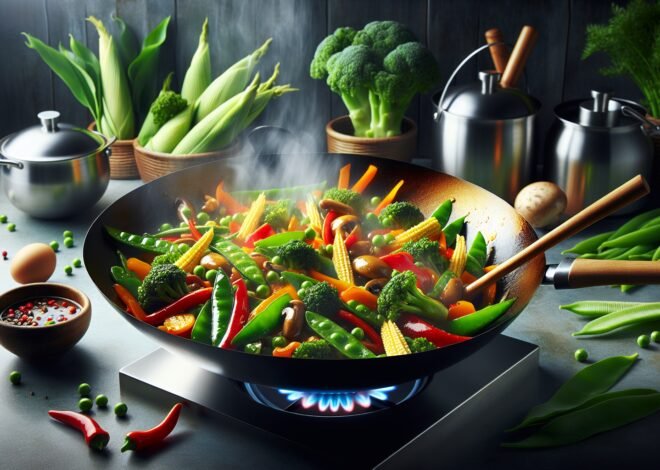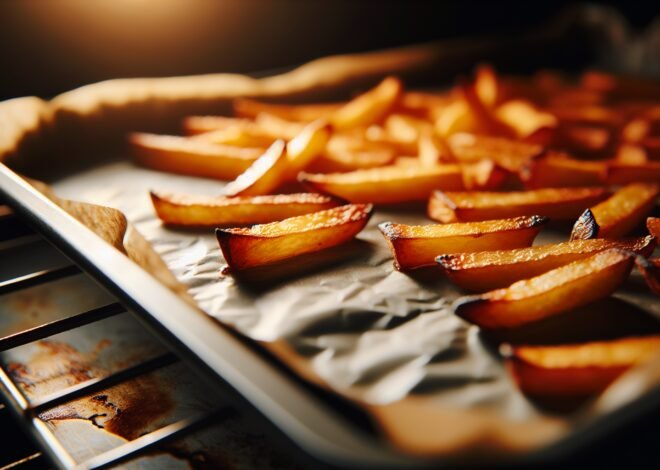
Best Tips for Thickening and Reducing Sauces
Thicken and reduce sauces effortlessly by mastering a few key techniques that elevate your dish. Did you know that the art of thickening can transform a simple sauce into a luxurious component of any meal? In this post, we’ll explore essential methods for achieving the perfect consistency in your sauces, from using thickening agents like cornstarch and roux to natural techniques like simmering. You’ll discover practical tips for enhancing flavors while achieving the ideal thickness. Dive in to learn how to create sauces that will captivate your taste buds and impress your guests.
How to Thicken Sauces Easily and Effectively
Thickening sauces is a vital skill in any kitchen. Whether you’re creating a rich gravy or a luscious pudding, the right consistency can make all the difference. Knowing how to achieve this can transform your dishes from ordinary to extraordinary. Let’s explore the techniques for thickening sauces effortlessly and effectively.
Choosing the Right Thickening Agents for Sauces
The success of a sauce often depends on the thickening agent you choose. Each agent has its unique properties, which can influence the flavor, texture, and appearance of the sauce. Common thickening agents include:
- Cornstarch: A versatile option, often used for its neutral flavor and glossy finish. Ideal for clear sauces.
- Flour: Adds body and a slightly opaque finish, perfect for heartier sauces.
- Arrowroot: Similar to cornstarch but works better in acidic sauces.
- Potato Starch: Great for creamy, thick sauces.
- Gelatin: Offers a unique texture, best for aspics and desserts.
Consider the type of sauce you’re making and the desired outcome to select the best thickening agent.
Steps to Thicken Sauces Using Cornstarch and Flour
Two of the most common thickening agents are cornstarch and flour. They are staples in many recipes due to their effectiveness and availability. Here’s how to use them:
Using Cornstarch
- Mix equal parts of cornstarch and cold water to form a slurry.
- Gradually stir the slurry into your simmering sauce, whisking constantly.
- Allow the sauce to return to a simmer, and cook for 1-2 minutes until thickened.
- Remove from heat and adjust seasoning as needed.
Using Flour
- Combine flour with melted butter to form a roux.
- Cook the roux over medium heat until it turns golden brown, releasing a nutty aroma.
- Slowly whisk in your liquid, ensuring no lumps form.
- Simmer the sauce, stirring often, until it reaches the desired thickness.
Both methods are effective, but the choice between cornstarch and flour depends on the sauce’s final use and flavor profile.
Alternative Methods for Sauce Thickening
If cornstarch and flour aren’t suitable, several alternative methods can also thicken sauces. These can add unique flavors and textures:
- Reduction: Simmering the sauce to evaporate water and concentrate flavors.
- Pureeing: Blending vegetables or legumes into the sauce for natural thickness.
- Egg Yolks: Whisked into warm sauces for a rich, creamy texture.
- Cream: Adding heavy cream for a thick, luxurious finish.
- Nut Pastes: Almond or cashew pastes add both thickness and flavor.
Experiment with these methods to find the perfect balance for your dishes. Each method offers a distinct taste, allowing you to tailor your sauce to your liking.
Best Techniques to Reduce Sauces for Enhanced Flavor
Reducing sauces not only thickens them but also intensifies their flavors. This technique is essential for creating rich, flavorful bases for many dishes. By mastering sauce reduction, you can elevate your cooking to new heights.
Understanding the Process of Sauce Reduction
Reduction involves simmering a sauce to evaporate excess liquid, thereby concentrating flavors and achieving the desired consistency. This process can enhance the depth of flavor in sauces:
- Simplicity: Use a wide pan for faster evaporation and even reduction.
- Patience: Allow the sauce to simmer gently; high heat can lead to burning.
- Consistency: Stir occasionally to ensure even reduction and prevent sticking.
Through reduction, ingredients meld together, allowing flavors to develop and shine. This technique is key to creating a robust and complex sauce.
Tips for Reducing Sauces Without Burning
Reducing sauces requires careful attention to avoid burning. Here are some tips to ensure a smooth reduction:
- Low Heat: Keep the heat low to moderate, allowing gradual evaporation.
- Frequent Stirring: Stir the sauce occasionally, especially if it contains sugar or other ingredients prone to sticking.
- Proper Cookware: Use a heavy-bottomed pan to distribute heat evenly.
- Liquid Monitoring: Keep an eye on the liquid level and adjust the heat if it’s reducing too quickly.
- Tasting: Taste frequently to ensure the flavors are balanced and the reduction is progressing as desired.
By following these tips, you can reduce sauces to the perfect consistency without compromising flavor.
How to Achieve Perfect Sauce Consistency
Achieving the right consistency is crucial for a successful sauce. The consistency can vary based on the dish, but it should always be smooth and velvety. Here’s how to get it right every time:
- Testing: Use a spoon to test the sauce’s thickness; it should coat the back without being too runny.
- Adjustment: If the sauce is too thick, add a splash of stock or water. If too thin, continue reducing.
- Fat Balance: Incorporate butter or cream to achieve a glossy finish and smooth texture.
- Texture: Strain the sauce if needed to remove any lumps or impurities.
With practice, achieving the perfect sauce consistency becomes second nature, enhancing the overall dining experience.
Common Mistakes to Avoid When Thickening and Reducing Sauces
Thickening and reducing sauces can elevate your dishes, but certain mistakes can undermine your efforts. Understanding these pitfalls helps you avoid them, ensuring your sauces are always on point.
Identifying When a Sauce Is Over-Thickened
An over-thickened sauce can be unpleasantly gummy or gelatinous. Here’s how to spot it and what to do:
- Signs: The sauce appears clumpy, lacks fluidity, or forms a skin.
- Solutions: Gradually add more liquid and whisk to incorporate smoothly.
- Prevention: Monitor thickening processes closely, adding thickening agents gradually.
Recognizing and rectifying over-thickened sauces keeps your dishes from becoming heavy and unappetizing.
Avoiding Flavor Loss During Sauce Reduction
Flavor loss can occur if the sauce is reduced too quickly or unevenly. Preserve the essence of your sauce with these strategies:
- Slow and Steady: Allow slow reduction to retain subtle flavors.
- Lid Use: Partially cover the pan to control evaporation without losing aroma.
- Ingredient Timing: Add delicate ingredients like herbs later in the process.
These techniques help maintain the sauce’s depth and character, ensuring it complements the dish beautifully.
Troubleshooting Common Sauce Preparation Issues
Even seasoned cooks face challenges when preparing sauces. Addressing these common issues can save a sauce from disaster:
- Lumpy Texture: Whisk vigorously or use an immersion blender to smooth out lumps.
- Separation: Re-emulsify by adding liquid and vigorously whisking over low heat.
- Weak Flavor: Enhance with reductions, fresh herbs, or a splash of vinegar or lemon juice.
By troubleshooting effectively, you can rescue a sauce and turn it into a culinary masterpiece.
Conclusion
Thickening and reducing sauces enhance their flavor and texture. Common methods include simmering a sauce to evaporate water, thereby condensing its ingredients. Roux, cornstarch, and arrowroot are popular thickening agents. Reduction intensifies flavors by concentrating them. Understanding the balance of heat and ingredients is crucial to perfecting sauce consistency.
FAQ
How can I thicken sauces without using flour?
Thickening sauces without flour is possible using alternatives like cornstarch, arrowroot, or potato starch. Simply mix with cold water and gradually add to your simmering sauce. Another option is reducing the sauce by cooking it longer to naturally thicken its consistency.
What methods are effective for reducing sauces quickly?
To reduce sauces quickly, use a wide, shallow pan to increase surface area for evaporation. Higher heat accelerates reduction, but keep an eye on the sauce to prevent burning. Stir frequently to ensure even thickening and to keep the flavors balanced.
Which ingredients are best for naturally thickening sauces?
Ingredients like pureed vegetables, beans, or cooked rice can naturally thicken sauces. Dairy products like cream or yogurt add richness and thickness as well. Gelatinous broths or stocks also contribute to a heartier texture without additional thickeners.
How do different temperatures affect the sauce reduction process?
Higher temperatures speed up evaporation, leading to quicker sauce reduction. However, too much heat may cause burning or loss of delicate flavors. Lower heat allows for slow, controlled reduction, preserving taste and texture better.
What are common mistakes to avoid when reducing sauces?
Avoid using pots that are too deep as they slow down evaporation. Stir consistently to prevent sticking and burning. Adding salt too early can lead to overly salty sauces, as flavors concentrate during reduction.
How can I achieve the perfect consistency in my homemade sauces?
For perfect consistency, monitor the sauce frequently. Adjust thickness by adding liquid if too thick or simmering longer if too thin. Taste regularly to balance seasoning and ensure a smooth, appetizing finish.











